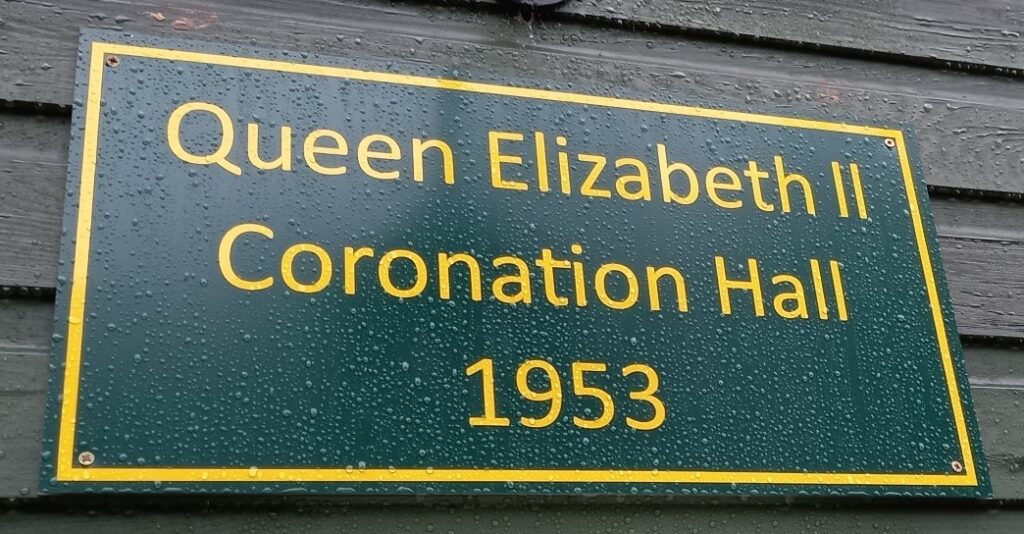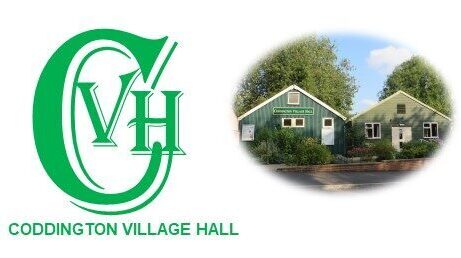History of Coddington Village Hall
Today’s village hall is made up of the original corrugated iron clad Reading Room and the later wooden Coronation Hall.
James Thorpe lived at Coddington Hall and owned much property in Coddington and it was he who paid for the construction of the original hall on part of his land. In November 1885 the Newark Advertiser reported the opening of the “new reading room for working men” when more than 100 of them, who had applied for tickets, sat down to tea at 6pm in the National School – which proved hardly large enough for the occasion.
The hall retains several of its original features including the old ornate cast iron brockets in the kitchen.
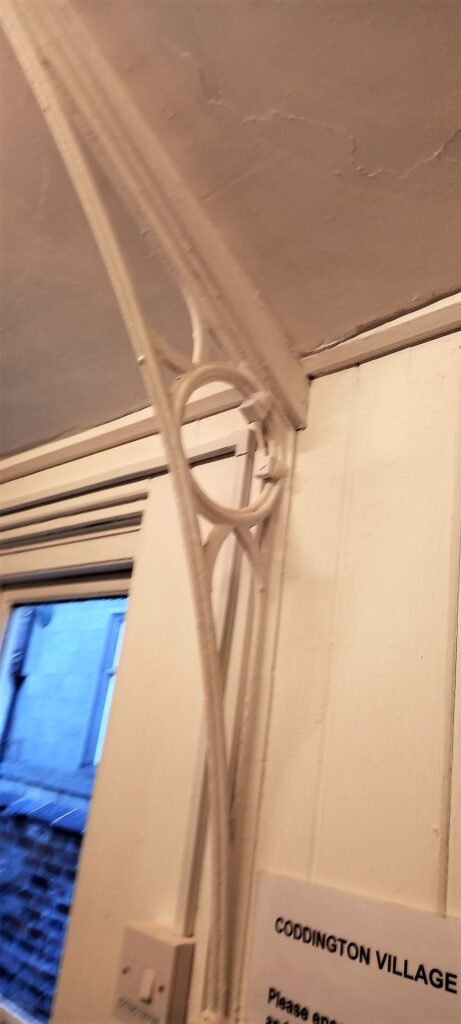
James Thorpe died in 1902 and much of his property passed to his eldest surviving son John Somerled Thorpe who sadly was killed during the First World War at the battle of Loose, in 1916.
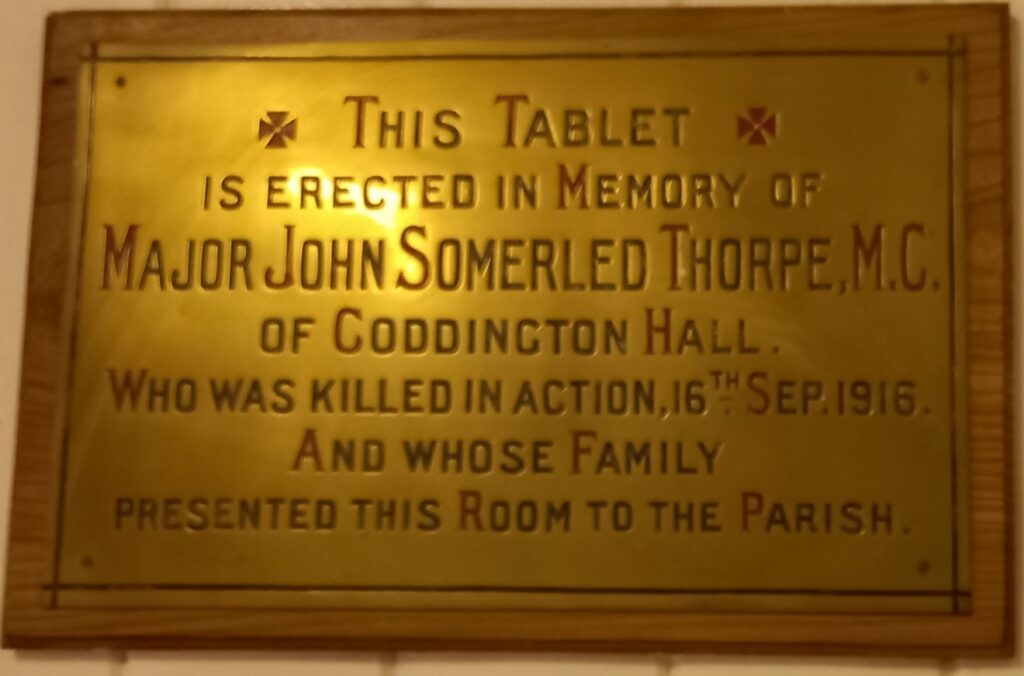
In December 1929 the Reading Room was officially conveyed to the Trustees of Coddington Reading Room by his successors Cecilia Thorpe and Francis Henry Meade “for the benefit of the inhabitants of Coddington”.
In 1942 a fund was started to create more facilities, however the Parish Council did not own quite enough adjacent land, so in April 1953 part of the land belonging to the Old Vicarage was bought by the Trustees from Ronald Chauntry Hunt (for four pounds ten shillings) on which to build the new Coronation Hall. Again according to the Advertiser, building started in November 1953 using “Empire timber, Abura, from West Africa” and it was opened in March 1954 by Mrs Hugh Tallents.
In 2014 the main hall underwent a refurbishment programme and is now fully insulated with new roof and double glazed windows. This also included new LED lights which provide a good standard of lighting. This year more subtle wall lights have been installed for when less brightness is required and the floor has been resealed.
Here are a couple of photos while the volunteers were working hard on the insulation works:
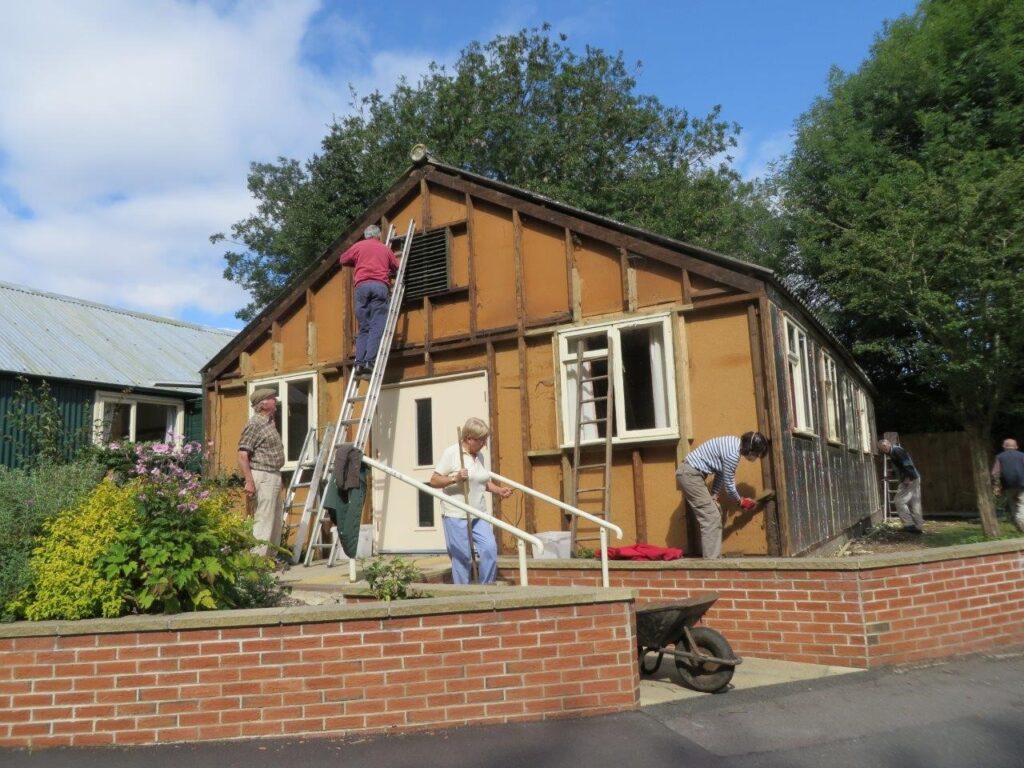
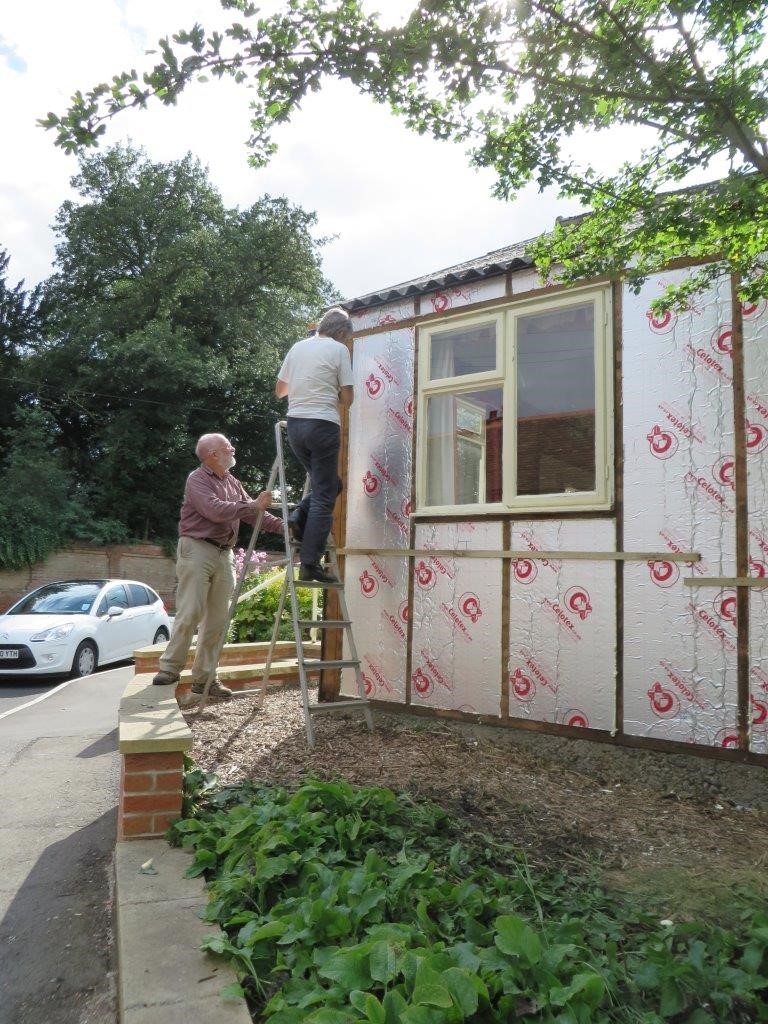
On the death of Her Majesty Queen Elizabeth II, a new plaque was added in her honour.
